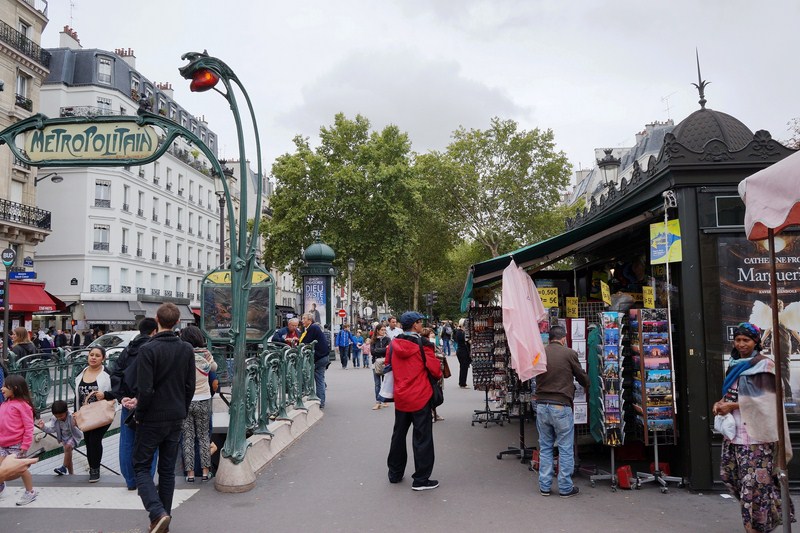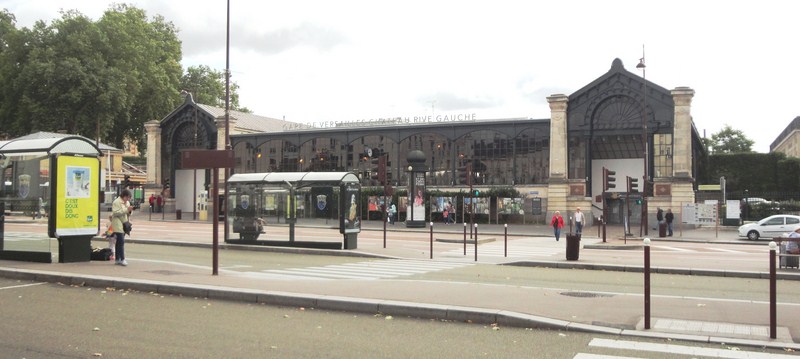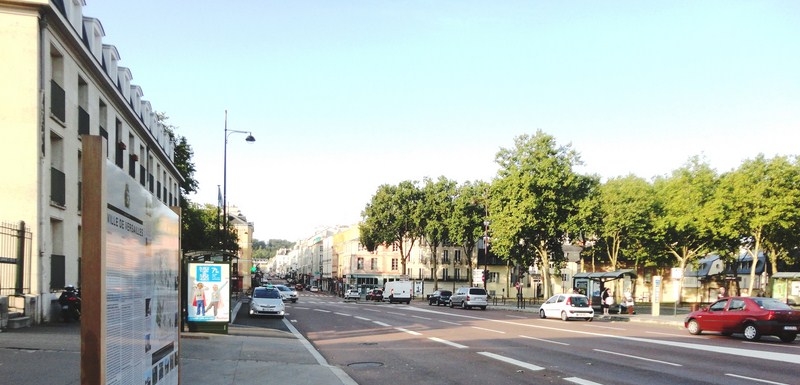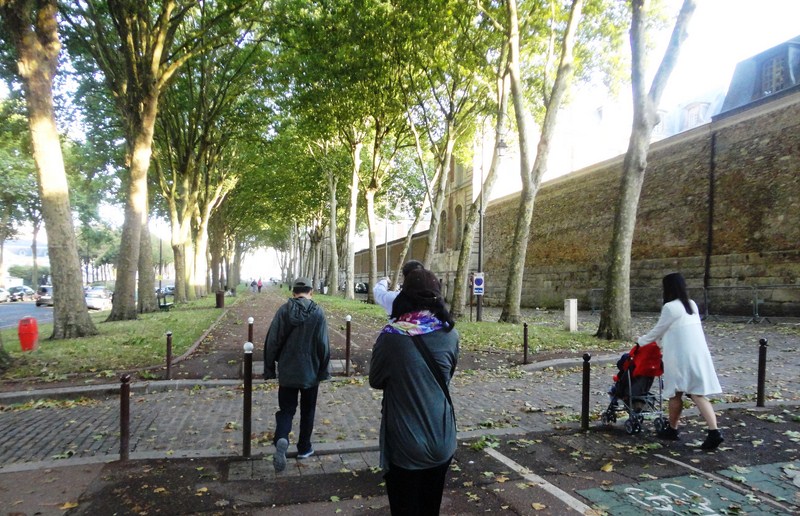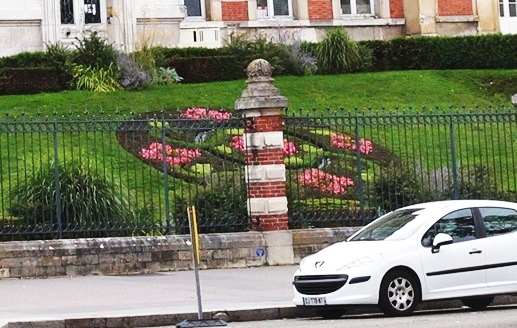The whole morning of our last whole day was reserved for the famous Palace of Versailles (Château de Versailles or simply Versailles), a royal château in Versailles, a wealthy and chic suburb of Paris, some 17.1 kms. (10.6 mi.) southwest of the French capital, in the department of the Yvelines, Île-de-France region of France.
Check out “Versailles Palace“
From Hotel Ibis Gare de l’Este, our home for our 4-day stay in Paris, Grace, Manny, Jandy, Cheska, Kyle and I walked to its nearby namesake train station where took train (RER line C) for the one-hour trip to Versailles, which includes a 15-min. transfer at Saint Michel. Upon arrival at Versailles Château – Rive Gauche train station (the closest one of the Palace), we just walked for 10 mins. to the Palace Gate.
Check out “Hotel and Inn Review: Ibis Paris Gare de l’Est 10th”
The de facto capital of the Kingdom of France for over a century (1682 to 1789) before becoming the cradle of the French Revolution, the 26.18 sq. km. (10.11 sq. mi. or 6,469-acre) Versailles became the préfecture (regional capital) of the Seine-et-Oise département in March 1790, then of Yvelines in January 1968. It is also the seat of a Roman Catholic diocese (created in 1790) and home to the Académie de Versailles, the largest (by its number of pupils and students) of France’s 30 nationwide académies (districts) of the Ministry of National Education.
By the standards of the 18th century, Versailles was a very modern European city. Born out of the will of King Louis XIII, the city has a rational and symmetrical grid of streets which was used as a model for the building of Washington, D.C. by Pierre Charles L’Enfant.
Though Versailles’ primary cultural attraction is the Palace, with its ornately decorated rooms and historic significance, plus its garden the town, also has other points of cultural notability. Its position as an affluent suburb of Paris has meant that it forms a part of the Paris artistic scene.
On our way to the Palace of Versailles, from the RER station, we cannot help but notice the grand Hotel de Ville. Originally a gathering place for the Palace visitors, this is now the Town Hall of Versailles. The building, as it stands today, was built at the turn of 20th century. Its construction, decided in 1897 by order of the then mayor Édouard Lefebvre, was entrusted to the architect Henri Legrand who won the competition (the architect Jean Bréasson also took part in it) launched in 1897.
With a budget of 1.2 million francs, work began on March 1898 and the town hall was inaugurated on November 18 , 1900. On June 24, 1900, the building was fully electrified.
The town hall is made up of two distinct parts. The first part (western wing), along the Rue du Général-de-Gaulle, across the palace, was the first town hall installed in 1790 in the old hotel de Conti. Preserved but completely transformed, it is a low-rise building preceded by a wide staircase. Its bell tower, deemed too high, was demolished in 1945 while the gates of the main courtyard disappeared. It features wood paneling and paintings dating from the 18th century.
ANECDOTE: During the time of King Louis XIV, the king did not want to see any building in Versailles higher than his bedroom.
After the French Revolution, to prove the supremacy of the republic over the monarchy, the Hotel de Ville was said to have been built so as to get the first floor above the level of the King’s bedroom in Chateau de Versailles.
The second, opening onto the Avenue de Paris around a main courtyard surrounded by gates, is the imposing, Neo-Louis XIII building by Henri Legrand. Topped by a bell tower overlooking the city, the campanile supports, at its base, a 1.6 m. diameter floral clock.
A memorial, sculpted by Albert Guilbert and Ernest Henri Dubois, commemorates the residents of Versailles who died in the First and Second World War and the wars in Indochina (1946-1954), Algeria (1954-1962) and Afghanistan.
Hotel de Ville: 4 4 Avenue de Paris , 78000 Versailles, France. Tel: +33 1 30 97 80 00


